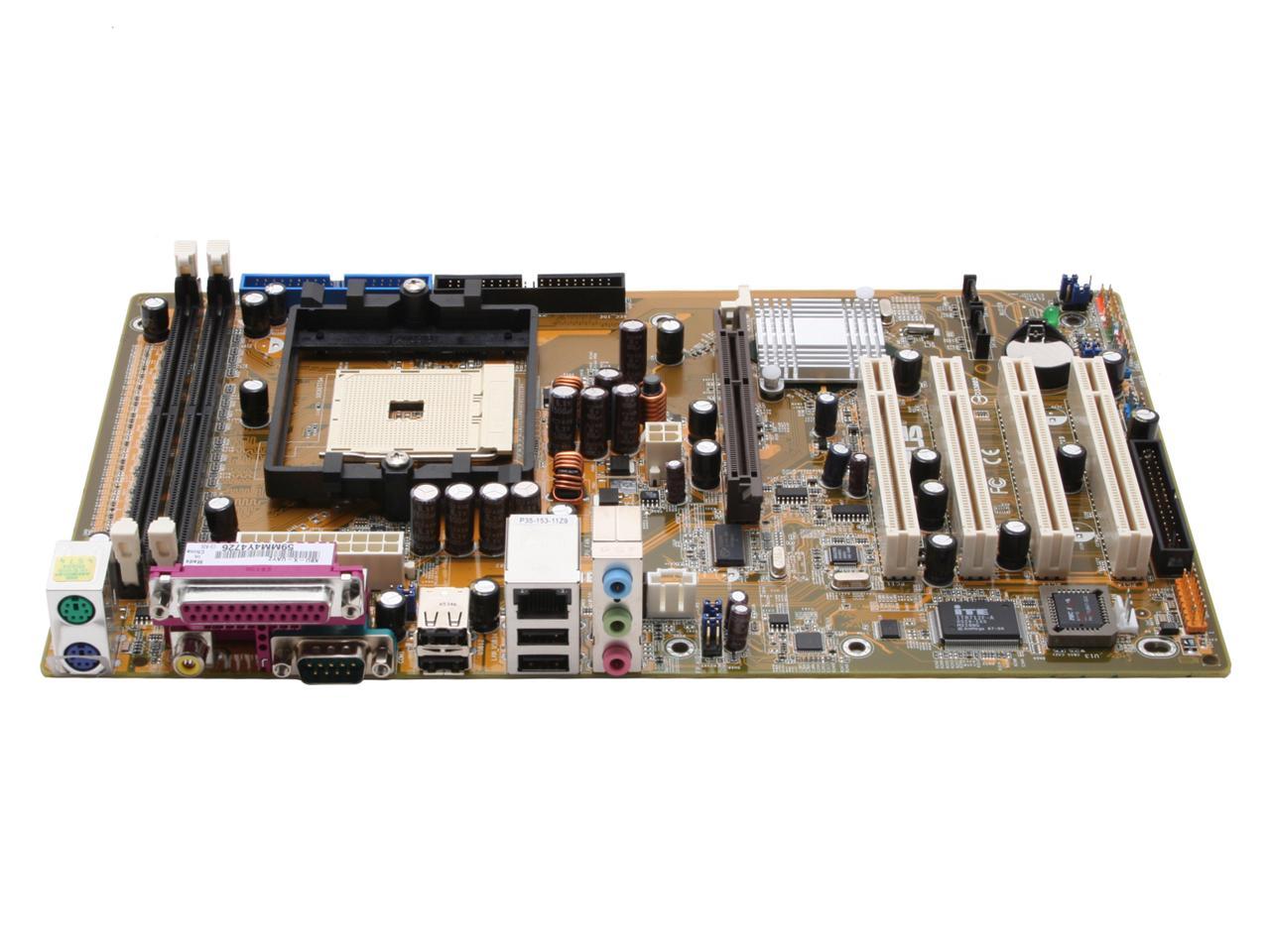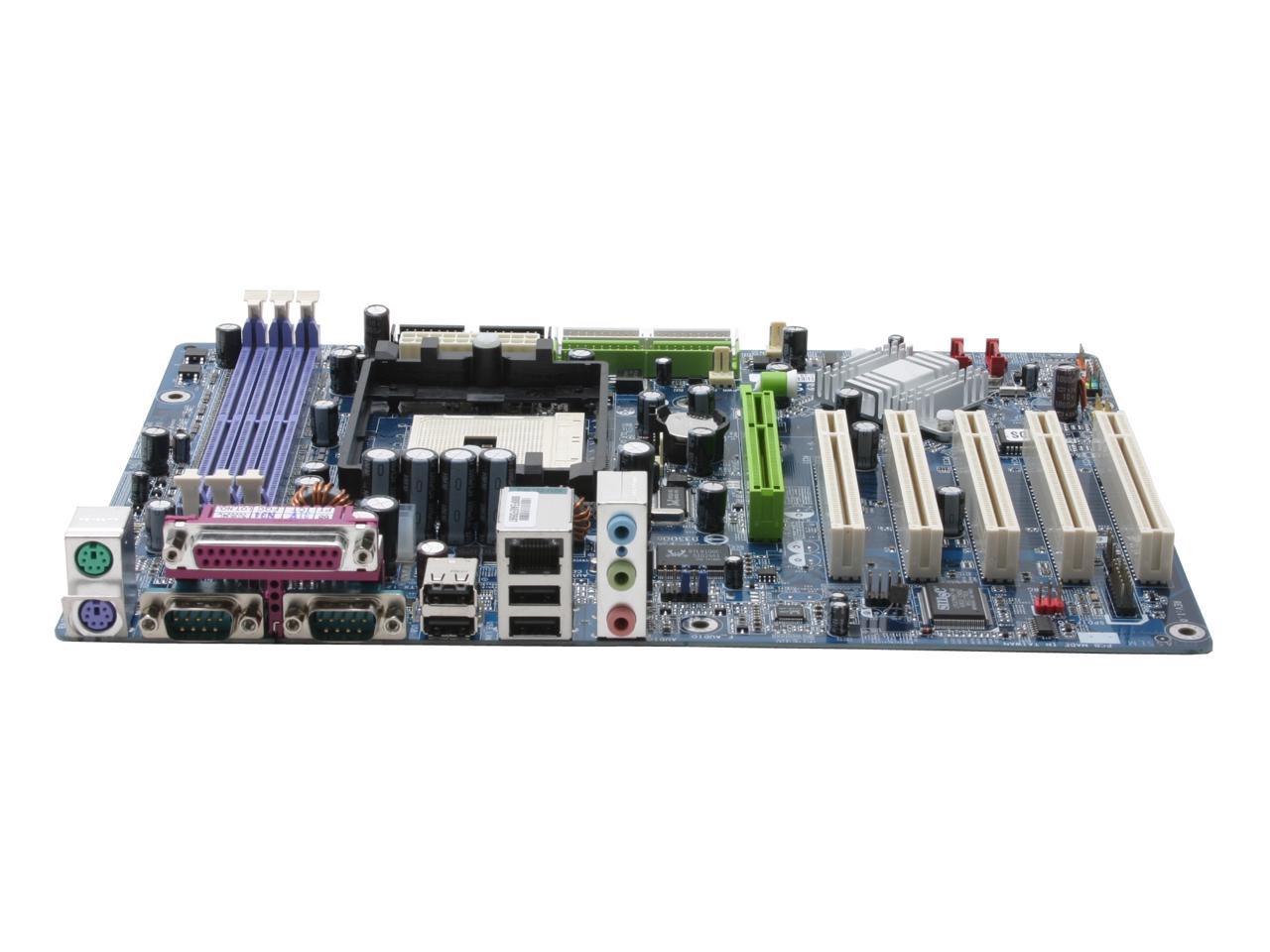| Release date | June 15, 1998; 22 years ago |
|---|---|
| Codename | NV4 |
| Cards | |
| Entry-level | Vanta |
| High-end | TNT |
| API support | |
| Direct3D | Direct3D 6.0 |
| History | |
| Predecessor | RIVA 128 (ZX) |
| Successor | RIVA TNT2 |

The RIVA TNT, codenamed NV4, is a 2D, video, and 3D graphics accelerator chip for PCs that was developed by Nvidia. It was released in mid-1998 and cemented Nvidia's reputation as a worthy rival within the developing consumer 3D graphics adapter industry. The first RIVA TNT based card was released on June 15, 1998 by STB Systems: Velocity 4400. RIVA is an acronym for Real-time Interactive Video and Animation accelerator.[1] The 'TNT' suffix refers to the chip's ability to work on two texels at once (TwiNTexel).[2]
Uli Motherboards Driver Download For Windows 10 64
Overview[edit]
Intel motherboard dh61sa driver for windows 7 32 bit, windows 7 64 bit, windows 10, 8, xp. Free delivery and bios releases with 1gb removable memory. Fixed issue where ps/2 devices still work in the operating system when the ps/2 port is disabled in bios. The 8800 series, codenamed G80, was launched on November 8, 2006 with the release of the GeForce 8800 GTX and GTS for the high-end market. A 320 MB GTS was released on February 12 and the Ultra was released on May 2, 2007.
Smaller motherboards help keep your case clean, which can help with cable organization, airflow, etc. However, larger motherboards also have redeeming features, such as more SATA ports or multiple PCIe slots. The ideal board size will vary depending on the type of server you want to build and how many drives you want to support. DRIVERS MS 7502 MOTHERBOARD FOR WINDOWS 8 DOWNLOAD (2020). Pickup return use download, pickup return merchandise authorization, test report see. Msi micro star, bios motherboard mainboard. Pc win7 ultimate. Pickup return use. Download, hmwtech co.,ltd cnc.
The TNT was designed as a follow up to the RIVA 128 and a response to 3Dfx's introduction of the Voodoo2. It added a second pixel pipeline, practically doubling rendering speed, and used considerably faster memory. Unlike the Voodoo2 (but like the slower Matrox G200) it also added support for a 32-bit (truecolor) pixel format, 24-bit Z-buffer in 3D mode, an 8-bit stencil buffer and support for 1024×1024 pixel textures. Improved mipmapping and texture filtering techniques, including newly added support for trilinear filtering, dramatically improved quality compared to the TNT's predecessor. TNT also added support for up to 16 MiB of SDR SDRAM. Like RIVA 128, RIVA TNT is a single chip solution.
The TNT shipped later than originally planned, ran quite hot, and was clocked lower than Nvidia had planned at 90 MHz instead of 110 MHz. Originally planned specifications should have placed the card ahead of Voodoo2 in theoretical performance for Direct3D applications, but at 90 MHz it did not quite match the Voodoo2. At the time, most games supported 3dfx's proprietary Glide API which gave the Voodoo2 a large advantage in speed and image quality, and some games only used the Glide API for 3D acceleration, leaving TNT users no better off than people who didn't have a 3D accelerator. Even in 'OpenGL only' comparisons such as the case in Quake 2, the Voodoo2 had the upper hand as a custom 'MiniGL' driver was made specifically for 3dfx cards to run the game (and most other OpenGL games at the time). The 3dfx MiniGL driver was not a fully featured OpenGL driver, but a wrapper that mapped certain OpenGL functions to their equivalents in Glide, and was able to attain a speed advantage because of that. Later on when fully featured OpenGL drivers were made for the 3dfx line of cards, it was noticed that it was much slower when compared to its cut down MiniGL brother. The TNT had 32-bit color support while the Voodoo2 only supported 16-bit (although internally dithered down from 24-bit color, beating the TNT in 16bit quality). Voodoo2 cards also gained an even larger speed advantage over the TNT because of the ability to link two Voodoo2 cards together in an 'SLI' setup.
TNT did not match the sales of the incredibly popular Voodoo2. 3Dfx's customer mind share was at its peak during this time and Nvidia was still a somewhat new player. Again, like with the RIVA 128, the lack of Glide API support hindered Nvidia's opportunities for market share growth. Glide was still considered the best 3D gaming API available by both gamers and developers. However, TNT gained Nvidia much attention and paved the way for the refreshed version called the RIVA TNT2. After all, unlike the rest of the competition, Nvidia had come close to the Voodoo2 in performance in some games, and beaten it in 32bit image quality.
In what would become standard industry practice on a massive scale in later years, Nvidia released a budget version of TNT called Vanta. This board used the same TNT chip but lowered its clock speed and halved both memory data bus width (to 64-bit) and memory size (to 16 MiB). By doing this, Nvidia was able to still sell TNT chips that couldn't reach the TNT's specified clock speeds[citation needed], a practice known as binning, and cut board costs significantly by using a narrower bus and less RAM. The board proved popular with OEM computer builders because of its capable feature-set and low price. Vanta also was implemented as integrated graphics on some motherboards.
TNT itself was used on several popular cards, such as the Diamond Viper V550 and STB Velocity 4400, both of which managed OEM wins with the likes of Dell and Gateway, among others.
Drivers[edit]
Nvidia's driver development with TNT was the beginning of their notably aggressive efforts to maintain the best set of drivers possible. TNT received the first branded driver within the industry, called Detonator.
These drivers were a huge success. While the TNT had always performed well on Intel based systems, it previously lagged behind in terms of performance on then current AMD based systems. At the time, Quake2 was the benchmark for performance and the 3dfx-made Voodoo2 enjoyed a large performance difference over the TNT because it had 3DNow! optimizations that negated the performance penalty of the weak, unpipelined FPU on then current AMD processors. The Detonator drivers included 3DNow! optimizations and the TNT's Quake2 performance jumped 30%.[citation needed] In fact, all OpenGL and DirectX applications benefited from such optimizations. This made the TNT a much more attractive 3D accelerator for AMD owners than previously.
The Detonator drivers also fixed compatibility issues with motherboards of the time, and improved overall software compatibility.[3]
The TNT was the last Nvidia graphics accelerator to have support for Windows 3.1x.
Uli Motherboards Driver Download For Windows 10 64-bit
Competing chipsets[edit]
See also[edit]

References[edit]


- ^'RIVA 128 Brochure'. Nvidia. Archived from the original on July 6, 1997. Retrieved October 9, 2007.
- ^'TNT2'. Nvidia. Retrieved October 12, 2007.
- ^'Nvidia RIVA TNT Detonator Drivers'. ActiveWindows. 1999. Retrieved June 15, 2008.
External links[edit]
| Wikimedia Commons has media related to Riva TNT series. |
- 'Nvidia and ABIT Announce Integrated Motherboard Graphic Solution' (Press release). Nvidia. June 1, 1999.
- 'Nvidia Broadens Market Reach with Vanta 3D Processor' (Press release). Nvidia. March 22, 1999.

| Chipset | Model name | Driver | BIOS *Latest BIOS Version recommended | WHQL |
|---|---|---|---|---|
| X99 | X99-DELUXE/U3.1 | Drivers | V | - |
| X99-DELUXE | Drivers | V | - | |
| X99-PRO/USB 3.1 | Drivers | V | V | |
| X99-PRO | Drivers | V | V | |
| X99-A/USB 3.1(TRANSFER EXPRESS) | Drivers | V | V | |
| X99-A/USB 3.1 | Drivers | V | V | |
| X99-A | Drivers | V | V | |
| SABERTOOTH X99 | Drivers | V | - | |
| RAMPAGE V EXTREME/U3.1 | Drivers | V | - | |
| RAMPAGE V EXTREME | Drivers | V | - | |
| X79 | P9X79 LE | Drivers | V | - |
| SABERTOOTH X79 | Drivers | V | - | |
| Rampage IV Black Edition | Drivers | V | - | |
| Rampage IV Extreme | Drivers | V | - | |
| Rampage IV Formula | Drivers | V | - | |
| Rampage IV GENE | Drivers | V | - | |
| Z97 | Z97-DELUXE/USB 3.1(NFC & WLC) | Drivers | V | V |
| Z97-DELUXE/(NFC & WLC) | Drivers | V | V | |
| Z97-DELUXE/USB 3.1 | Drivers | V | V | |
| Z97-DELUXE | Drivers | V | - | |
| Z97-PRO(Wi-Fi ac)/USB 3.1 | Drivers | V | - | |
| Z97-PRO(Wi-Fi ac) | Drivers | V | V | |
| Z97-PRO | Drivers | V | - | |
| Z97-A/USB 3.1 | Drivers | V | V | |
| Z97-A | Drivers | V | V | |
| Z97-AR | Drivers | V | - | |
| SABERTOOTH Z97 MARK 1/USB 3.1 | Drivers | V | V | |
| SABERTOOTH Z97 MARK 2/USB 3.1 | Drivers | V | V | |
| SABERTOOTH Z97 MARK 2 | Drivers | V | - | |
| GRYPHON Z97 | Drivers | V | V | |
| MAXIMUS VII FORMULA | Drivers | V | - | |
| MAXIMUS VII FORMULA/WATCH DOGS | Drivers | V | - | |
| MAXIMUS VII HERO | Drivers | V | - | |
| MAXIMUS VII GENE | Drivers | V | - | |
| MAXIMUS VII RANGER | Drivers | V | - | |
| MAXIMUS VII IMPACT | Drivers | V | - | |
| Z97-E | Drivers | V | - | |
| Z97-K/CSM | Drivers | V | - | |
| Z97-P | Drivers | V | V | |
| Z97-C | Drivers | V | V | |
| Z97M-PLUS | Drivers | V | - | |
| Z97-PRO GAMER | Drivers | V | - | |
| Z97I-PLUS | Drivers | V | - | |
| H97 | H97M-PLUS | Drivers | V | - |
| H97-PRO | Drivers | V | - | |
| H97-PLUS | Drivers | V | - | |
| H97I-PLUS | Drivers | V | V | |
| H97-PRO GAMER | Drivers | V | V | |
| H97M-E/CSM | Drivers | V | V | |
| H87 | H87M-E | Drivers | V | - |
| H87M-PLUS/CSM | Drivers | V | - | |
| Q87 | CS-B | Drivers | V | V |
| Q87M-E/CSM | Drivers | V | V | |
| Q87T/CSM | Drivers | V | V | |
| CS-B/CDM/SI | Drivers | V | - | |
| Q87M-A/TYCO/SI | Drivers | V | - | |
| H81 | H81M-A | Drivers | V | V |
| H81M-C/CSM | Drivers | V | V | |
| H81I-PLUS/CSM | Drivers | V | V | |
| H81T/CSM | Drivers | V | V | |
| H81M-P PLUS | Drivers | V | V | |
| H81M-E | Drivers | V | V | |
| H81M-D PLUS | Drivers | V | V | |
| H81M-K | Drivers | V | V | |
| B85 | VANGUARD B85 | Drivers | V | - |
| B85M-G PLUS | Drivers | V | - | |
| B85M-GAMER | Drivers | V | - | |
| B85-PLUS | Drivers | V | - | |
| B85M-K | Drivers | V | - | |
| B85M-D PLUS | Drivers | V | - | |
| B85-A R2.0 | Drivers | V | - | |
| B85-PRO R2.0 | Drivers | V | - | |
| B85M-G R2.0 | Drivers | V | - | |
| B85M-E/CSM | Drivers | V | V | |
| Braswell | N3050M-E | Drivers | V | - |
| N3150M-E | Drivers | V | - | |
| N3150I-C | Drivers | V | - | |
| N3050I-C | Drivers | V | - | |
| Bay-Trail | J1900M-A | Drivers | V | - |
| J1800M-A | Drivers | V | - | |
| J1900I-C | Drivers | V | - | |
| J1800I-A | Drivers | V | - | |
| J1800I-C | Drivers | V | - |
The following motherboards offer Windows 10 driver for OS upgrade and compatible installation:
Uli Motherboards Driver Download For Windows 10 32
| X79 | ||||
|---|---|---|---|---|
| X79-DELUXE | P9X79 | |||
| Z97 | ||||
| SABERTOOTH Z97 MARK 1 | SABERTOOTH Z97 MARK S | |||
| Z87 | ||||
| Z87-DELUXE | Z87-DELUXE/DUAL | Z87-DELUXE/QUAD | Z87-PRO | Z87-PRO(V EDITION) |
| Z87-PLUS | Z87-PLUS(VIVOMOUSE EDITION) | Z87-EXPERT | Z87-A | Z87-C |
| SABERTOOTH Z87 | GRYPHON Z87 | MAXIMUS VI EXTREME | MAXIMUS VI FORMULA | MAXIMUS VI GENE |
| MAXIMUS VI HERO | MAXIMUS VI IMPACT | Z87-K | Z87M-PLUS | |
| H87 | ||||
| H87M-PRO | H87-PRO | H87-PLUS | H87I-PLUS | |
| B85 | ||||
| B85M-C/C/SI | ||||
| B75 | ||||
| B75M-PLUS | P8B75-M | B75M-A | ||
| H61 | ||||
| P8H61-M LE R2.0 | P8H61-M LE/CSM R2.0 | H61 PLUS | H61M-PRO | H61M-A/BR |
| H61M-C | H61M-CS | H61M-D | H61M-E | H61-PLUS |
| H61M-F | H61M-K | P8H61-I R2.0 | P8H61-M LX2 R2.0 | P8H61-M2/C/SI |
| P8H61-M PLUS V3 | ||||
| Q87 | ||||
| Q87I-PLUS | ||||
| Q77 | ||||
| P8Q77-M | P8Q77-M2 | P8Q77-M2/CDM/SI | ||
| HM70 | ||||
| C8HM70-I/HDMI | C8HM70-I | |||
| Bay-Trail | ||||
| EM1900I-E | ||||
